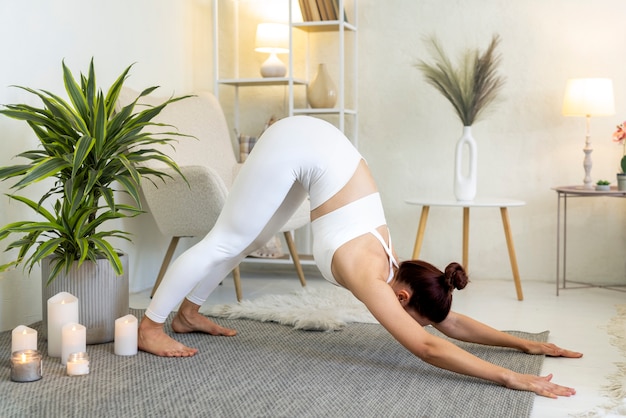
A yoga body isn’t just about flexible limbs; this ancient practice can also boost memory, heart, and bone health. Brits are now spending a staggering £790 million a year on yoga classes and mats. While there are increasingly odd variations like rage yoga, naked yoga, and dog yoga, science is also showing us the real benefits of traditional yoga.
Researchers at UCLA found that a three-month course of yoga and meditation was more effective than memory exercises for reducing age-related brain impairment. Another study showed it could improve sleep for breast cancer survivors.
When Lucy Edge, a former advertising executive, fell into a deep depression, she chose yoga over prescribed anti-depressants. After taking a career break to learn yoga in India, she returned with more happiness and a profound sense of contentment. This inspired her to write three books on yoga and to establish Yoga Meds, a resource listing over 300 clinical trials highlighting yoga’s benefits for various conditions.
Yoga’s benefits for mental health are well-documented. For example, the UCLA study demonstrated that 12 weeks of yoga and meditation could improve spatial and visual memory, reduce depression and anxiety, and increase resilience to stress in adults over 55. Participants did one hour of Kundalini yoga per week, a gentle form incorporating breathing techniques, meditation, and chanting mantras. They also practiced 20 minutes daily of Kirtan Kriya, combining chanting, hand movements, and visualization.
Yoga can improve heart health as well. A 2014 review published in the European Journal of Preventative Cardiology found that yoga could lower heart disease risk as effectively as conventional exercise like brisk walking. Stress reduction through yoga is key, as stress hormones increase heart rate and blood pressure, raising the risk of blood clots.
For those dealing with stress, restorative yoga, which involves holding supported poses for extended periods, can be highly beneficial. Likewise, yoga can significantly reduce back pain, as shown by a primary care rehabilitation program where 87% of participants reported pain reduction. Yoga’s weight-bearing exercises also help increase bone density and can be adapted to all fitness levels.
To get started with yoga, it’s helpful to inform your teacher of any health conditions and opt for beginner-friendly styles like Hatha or Iyengar yoga. Those with specific issues like back pain should consult their doctor regarding possible subsidized yoga courses.
When choosing yoga props, consider factors like where you’ll store your mat and how portable it needs to be. Opt for a thicker mat to protect your joints if you experience knee or wrist pain. The Valka Yoga Elephant Cork Yoga Mat is a recommended choice — it’s eco-friendly, durable, and offers good cushioning. Cork mats are great for those who sweat as they become grippier when wet and are naturally antimicrobial and odor-resistant.
Yoga blocks, like the Valka Yoga Block, can aid in achieving difficult poses by adding extra length and stability. While cork blocks are heavier than foam, they provide better grip and support.
Not flexible? No problem. Yoga can benefit everyone, regardless of flexibility. Beginners might enjoy Yin or Restorative yoga, which use props for support and are done under candlelight. More energetic options include Vinyasa Flow, which links postures to breath in a dance-like sequence, and Anusara yoga, a modern style with flowing movements often set to upbeat music. Iyengar yoga focuses on precise alignment and is great for beginners due to its use of props. Yoga Therapy is another option, tailored to help heal specific injuries or illnesses.
Ultimately, yoga offers a versatile solution to improve both physical and mental health, with various styles and adaptations available to fit everyone’s needs.